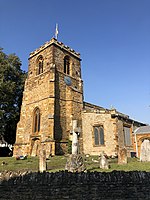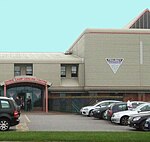Abbeyfield School, Northampton
Abbeyfield School is a mixed secondary school and sixth form located in Northampton in the English county of Northamptonshire.It was previously known as Mereway Upper School which had an intake of 13- to 18-year-olds. Due to school reorganisation in Northamptonshire in 2004 the school expanded its intake to 11-year-olds to become a full secondary school, and it was renamed Mereway Community College. The school moved into a new building in 2008 and was renamed Abbeyfield School. In October 2012, the school was converted to academy status sponsored by the Creative Education Trust.Abbeyfield School offers GCSEs and BTECs as programmes of study for pupils, while sixth form students can choose to study from range of A Levels and further BTECs.
Excerpt from the Wikipedia article Abbeyfield School, Northampton (License: CC BY-SA 3.0, Authors).Abbeyfield School, Northampton
Mereway,
Geographical coordinates (GPS) Address Phone number Website External links Nearby Places Show on map
Geographical coordinates (GPS)
| Latitude | Longitude |
|---|---|
| N 52.215065 ° | E -0.903435 ° |
Address
Abbeyfield School
Mereway
NN4 8BU , Far Cotton and Delapre
England, United Kingdom
Open on Google Maps









